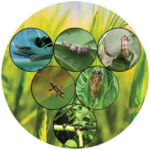Crop protection chemicals are defined as chemicals that prevent the action of unwanted weeds and pests to augment crop yield. According to the market database, these chemicals are largely used in different agricultural practices, and without such chemicals, the agriculture practice would be less efficient. Crop protection chemicals are used in different crop types which include cereals, grains, oilseeds, pulses, fruits, vegetables, and others. The application of these chemicals in the agriculture module can be assessed using Global Market Database. The cloud based market analysis tool studies 600+ markets across 12 different industries.
According to the market database, agrochemicals are widely available in dry or liquid forms. Market research tools suggest that liquid crop protection chemicals are preferred as they offer significant advantages such as low cost, can be easily mixed, longer shelf life, easy to handle, and sustainable. Water-based, oil-based, polymer-based, or other combinations are some of the available liquid crop protection firms in the market.
Classification Based on Source:
According to the market database, crop protection chemicals are obtained from two distinct sources which are synthetic sources and biopesticides. Market research suggests that synthetic sources are manufactured in dedicated laboratories and contain a heavy mixture of chemicals. Such type of sources is marked as dangerous and toxic if not used in a controlled manner. According to market research performed via market research tools, higher concentrations of synthetic pesticides can dampen the quality of the crops and pose significant health risks to the consumer. Market database indicates that recent advancements in the market have allowed reducing the impact of these chemicals. Market research states that synthetic chemicals have commanded a greater share in the market as they are easy to produce and can be deployed easily.
According to the market database, biopesticides are described as pesticides that are produced naturally with minimum usage of chemicals. These types of pesticides have captured greater attention in the market due to the non-toxic nature as compared to synthetic chemicals. Free market data from market research tools state that biopesticides also offer the capability to be target-specific and do not impact crop quality. Market research suggests that a mix of such factors has contributed towards an optimistic market outlook for this type of source. A greater shift towards environment-friendly practices across the world has supported the growth of biopesticides.
Varied Types of Crop Protection Chemicals:
Market database states that the crop protection chemicals are available in different forms to target specific external agents. According to market research reports, the vertical is divided into herbicides, insecticides, fungicides, rodenticides, disinfectants, fumigants, plant growth regulators, and others. Market database suggests that the herbicide vertical has experienced a greater share in the market. Herbicides are defined as substances that kill or prevent the growth of unwanted plants such as weeds. According to market research, this type of crop protection chemical is used to enhance the crop productivity and quality of the output. The prominent growth segments for an industry can also be studied via Global Market Database. The cloud based market research tool studies the shift in line with changing market trends.
Herbicides also offer other significant advantages such as the reduction in soil erosion and improve soil fertility which has helped to increase the crop yield. The market outlook for herbicides is expected to stay buoyant.
Insecticides are specific chemicals that are used to target and kill insects. Pests and insects can damage the quality of the crops and lead to a decrease in crop yield. Insecticides are widely used to counter these effects. Market database suggests that continuous research activities have helped to develop innovative insecticides to target the pests that have gained resistance from the older types. According to the market database, fungicides are used to inhibit the growth of fungi in different crop categories. They help to control the actions of specific fungi such as rusts, melders, and blights.
Mode of Application for Crop Protection Chemicals:
As the crop protection chemicals are available in dry and liquid forms, they are utilized in different ways to deliver the desired output. Market research tools suggest that this includes the use of methods such as foliar spray, seed treatment, soil treatment, and others. The foliar spray method is defined as a technique of feeding plants by application of liquid crop protection chemicals directly to the leaves. According to the market database, the foliar spray segment accounts for a maximum percentage of the market share generated. Market research platforms like Global Market Database can be used to study the value chain and the growth in end-users associated with a sector as well. This method is used widely in different regions as it is easy to administer and involves less time.
Market database states that in seed treatment techniques, the seeds of the crops are treated with the required chemicals before immersed in the soil for production. According to market research, different chemicals which are dependent on the type of crop are applied to the outer layers of the seeds. Such type of method has led to improved yield in several cases. Market research reports also suggest that these crop protection chemicals can be used to treat the contaminated soil as well. This type of action is termed a soil treatment method and has helped to avoid the growth of weeds and pests in the first place.
Growth Factors in Crop Protection Chemicals Market:
Market database indicates that the increased need for food security coupled with a rise in population has led to the growth of this market. According to market research platforms, a rise in population has led to greater production of agricultural products to provide a safe food supply. As per the International Food Policy Research Institute, almost 690 million people went hungry around the world in the year 2019. Government policies have supported the use of crop protection chemicals in a controlled manner. The impact of government policies on this industry vertical and the agriculture module can be studied using Global Market Database. The market research tool provides free market data for the first 5 Global Market Database website logins. Market research suggests that recent policies are drafted in support of biopesticides to reduce the impact of chemicals on the crops and the consumer’s body.
According to the market database, the crop protection chemicals market showcased resilience against the COVID-19 impact apart from the supply chain disruptions. The global agricultural market continued the operations and sustained the demand for these chemicals. Market database states that the advancements in technology such as the use of agricultural drones have contributed towards innovative solutions in this market. Agricultural drones are Unmanned Aerial Vehicles (UAVs) and are used to spray these chemicals on the crops. They have set capacity and avoid wastage of crops to cover a larger land area in one go.
APAC Region Analysis for Crop Protection Chemicals:
According to market database, region is the largest consumer of crop protection chemicals due to greater population density and increased agricultural activities. According to Food and Agriculture Organization (FAO), Brazil, China, and the U.S are major consumers of crop protection products. China and India are the countries that are expected to drive growth in this region. Market research reports suggest that major players across the globe have established their research and manufacturing units. The regional competitive mapping for a sector can also be studied via Global Market Database. The market intelligence platform provides customized market research reports as per the client’s requirements.
Advancements in technologies and greater awareness of biopesticides have contributed towards a positive market outlook for this region. Acceptance of Integrated Pest Management (IPM) techniques has started to offer better opportunities in this region. According to Directorate of Plant Protection Quarantine and Storage (India) report, agricultural crop yield has increased by 40.14% & 26.63%. Also In rice and cotton crops with the implementation of Integrated Pest Management techniques.


